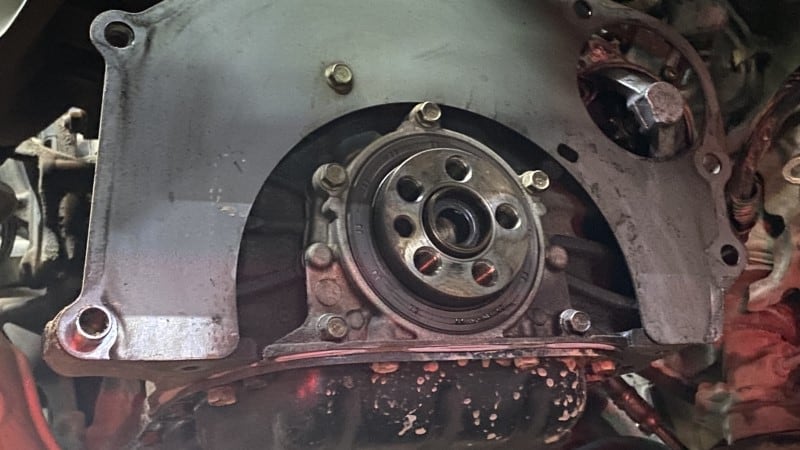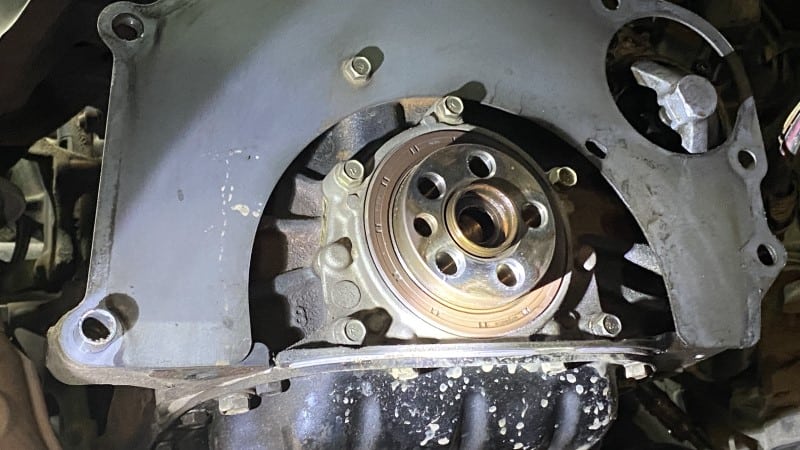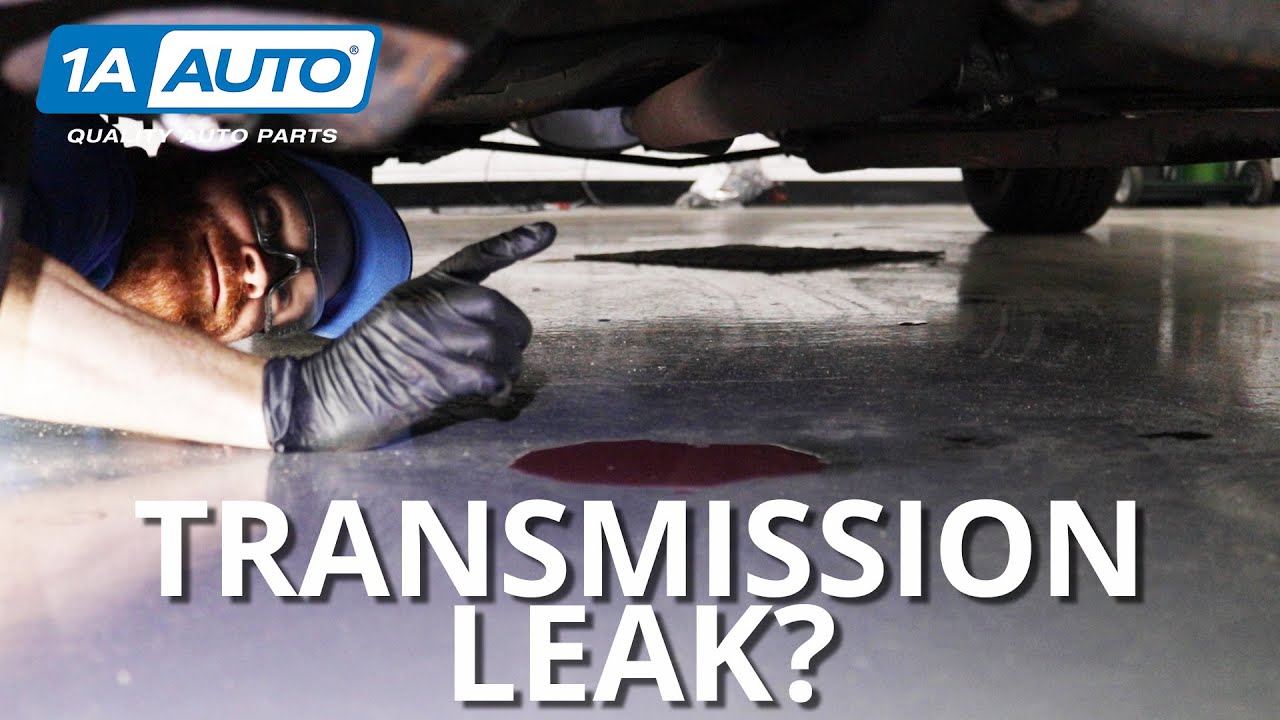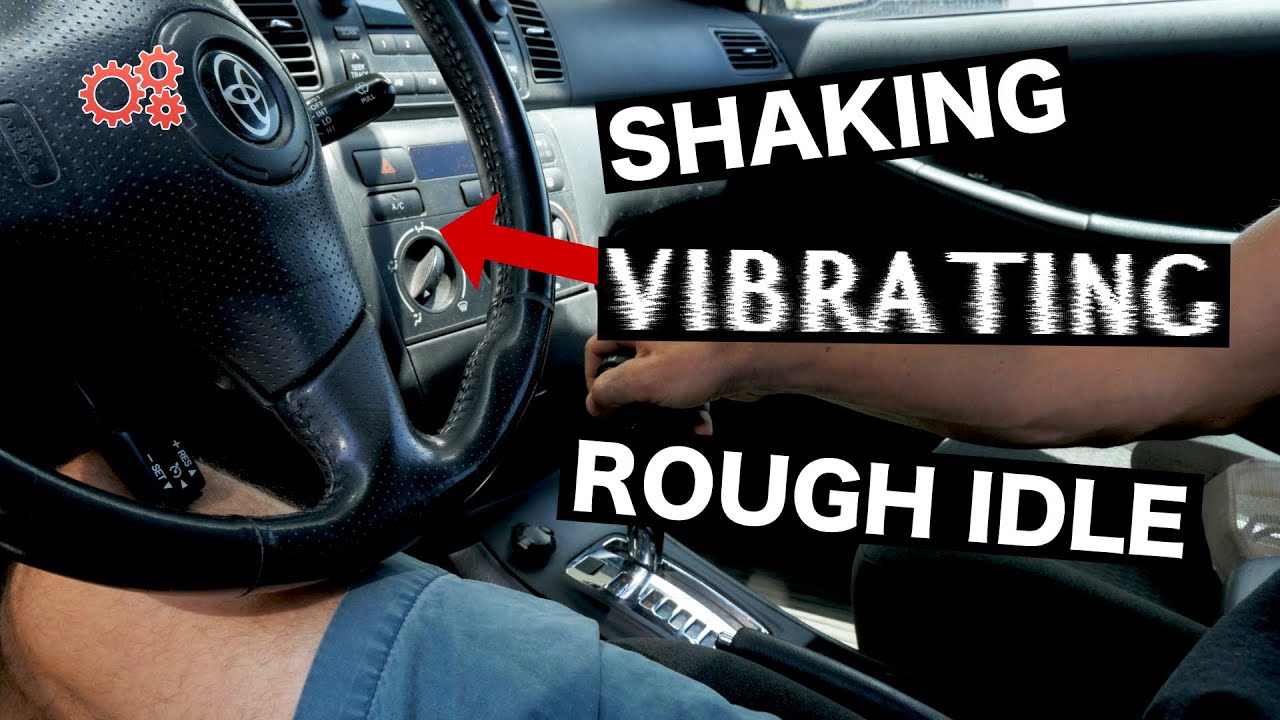Under your car, do you notice any puddles of oil, particularly when you start the engine? That might be a symptom of a rear main seal leak that is most obvious. Therefore, it should not come as a shock to you if an auto mechanic informs you that the rear main seal is leaking oil.
If your vehicle’s rear main seal were to leak, it would be a major inconvenience because repairing it would necessitate disassembling the engine or transmission, which you probably wouldn’t do unless your engine or transmission were falling.

Signs of a Leak in the Rear Main Seal
Because of where this seal is located, finding and correcting an oil leak is a difficult and involved task. The driver will notice certain indicators if the rear crankshaft seal is faulty or leaking, as is the case with any mechanical part.
- Oil puddles
- Smoke from under the vehicle
- Accumulation of dirt and debris
- Quick Oil Reduction
When does the rear main seal start to leak?
When the rear main seal fails, it could be due to a number of things. First, we’ll take a quick look at what might cause the rear crankshaft seal to become damaged or deformed.
- Engine oil condition
- Worn main bearing
- Crankshaft condition
- Clogged or defective PVC system
- Misalignment issues
- Seal coating

How to Change the Main Seal in the Back
Your car could be in danger if the rear main seal were to leak. Quick action is required to repair the leak if oil is leaking from that area; else, the engine could suffer serious damage. If the seal shrinks, somewhat deteriorates, or becomes deformed as a result of irregular oil changes, you won’t need to spend much time fixing it. In such instance, reconditioning the seal is sufficient; replacement is unnecessary.
The acidity of the oil, the heat, and other related problems cause engine seals to wear down with time; neglecting maintenance is a common cause of this. To recondition the seal and get it to work for a few thousand miles, you’ll need the rear main seal stop leak.
If your rear main seal needs reconditioning, a blue devil sealer is the tool to use. The rear main seal leak can be stopped using this product. This is accomplished by repairing damage to rubber gaskets and seals; it is also safe to use on gas and diesel engines, and it works wonders on timing cover leaks. It works equally well with regular and synthetic oils. If the seal is damaged in any way—by a chunk, a tear, or a hole—this will not work. If a rubber seal gets severely damaged, no amount of patching will save it. Here are the steps to fix a massive hole in the rear crankshaft seal.
- Disconnect the battery
- Remove the transmission
- Remove the flywheel
- Remove the rear main seal bolts
- Remove the rear crankshaft seal
- Compare the new seal
- Install the new rear main seal
- Install the rear main seal housing
Conclusion
Given this, it’s crucial to be alert for any signs of a leak in the rear main seal and take immediate action if you detect one. It could be challenging to replace the rear main seal unless you’re an expert mechanic. Although the process is challenging, it is not impossible. You can accomplish it by yourself if you put in a lot of time and effort. Never put safety first in an effort to save money on repairs.





